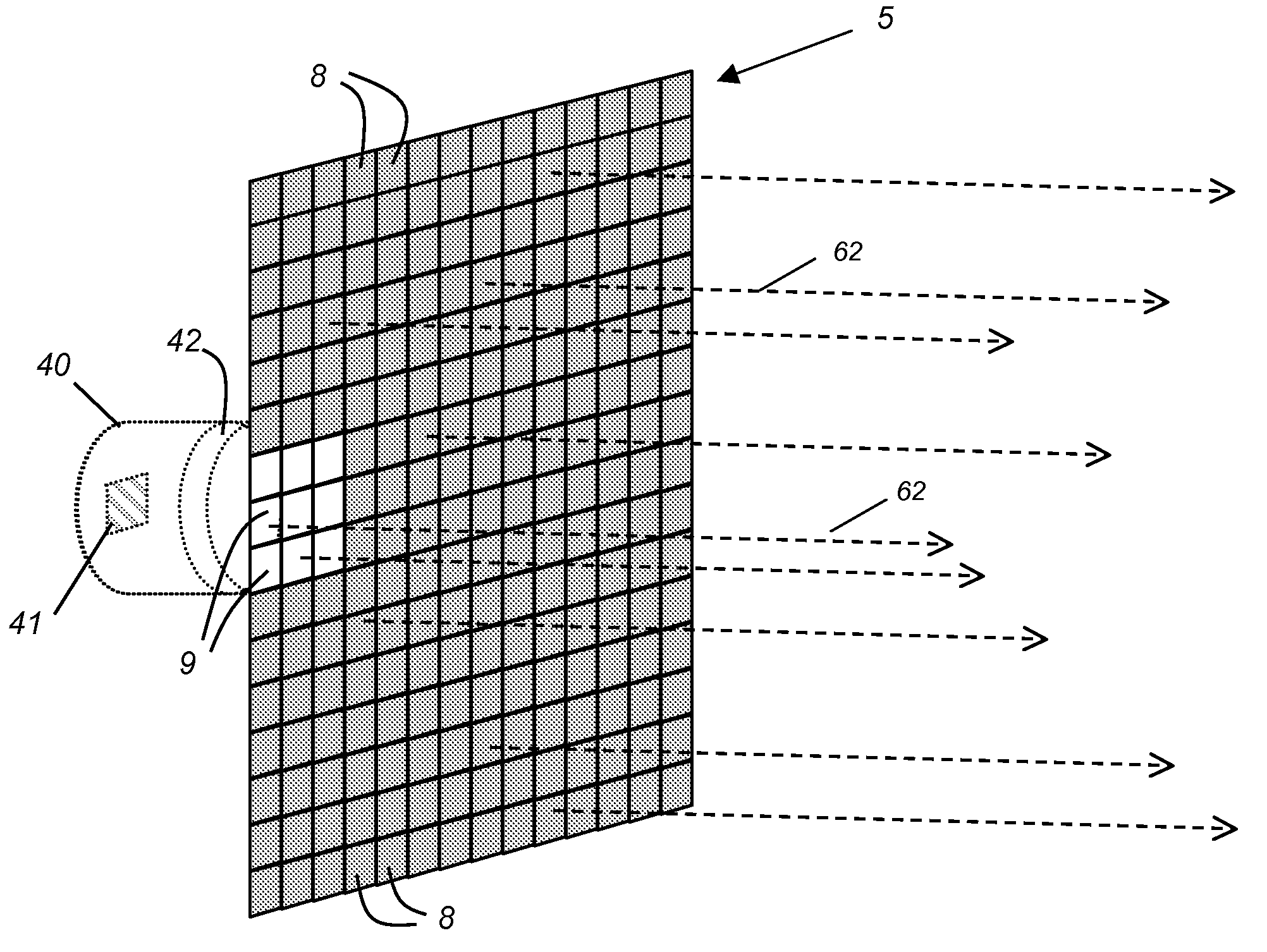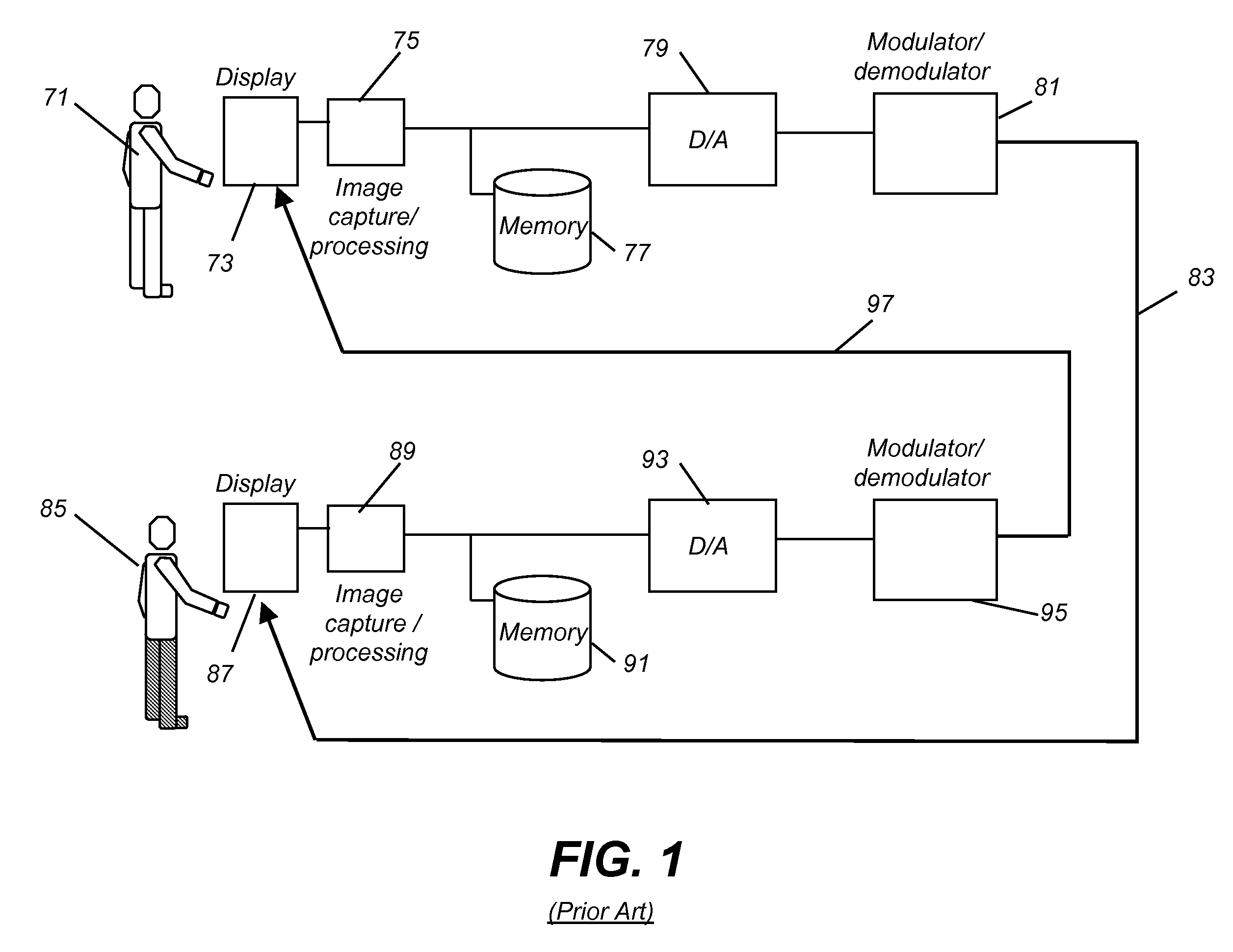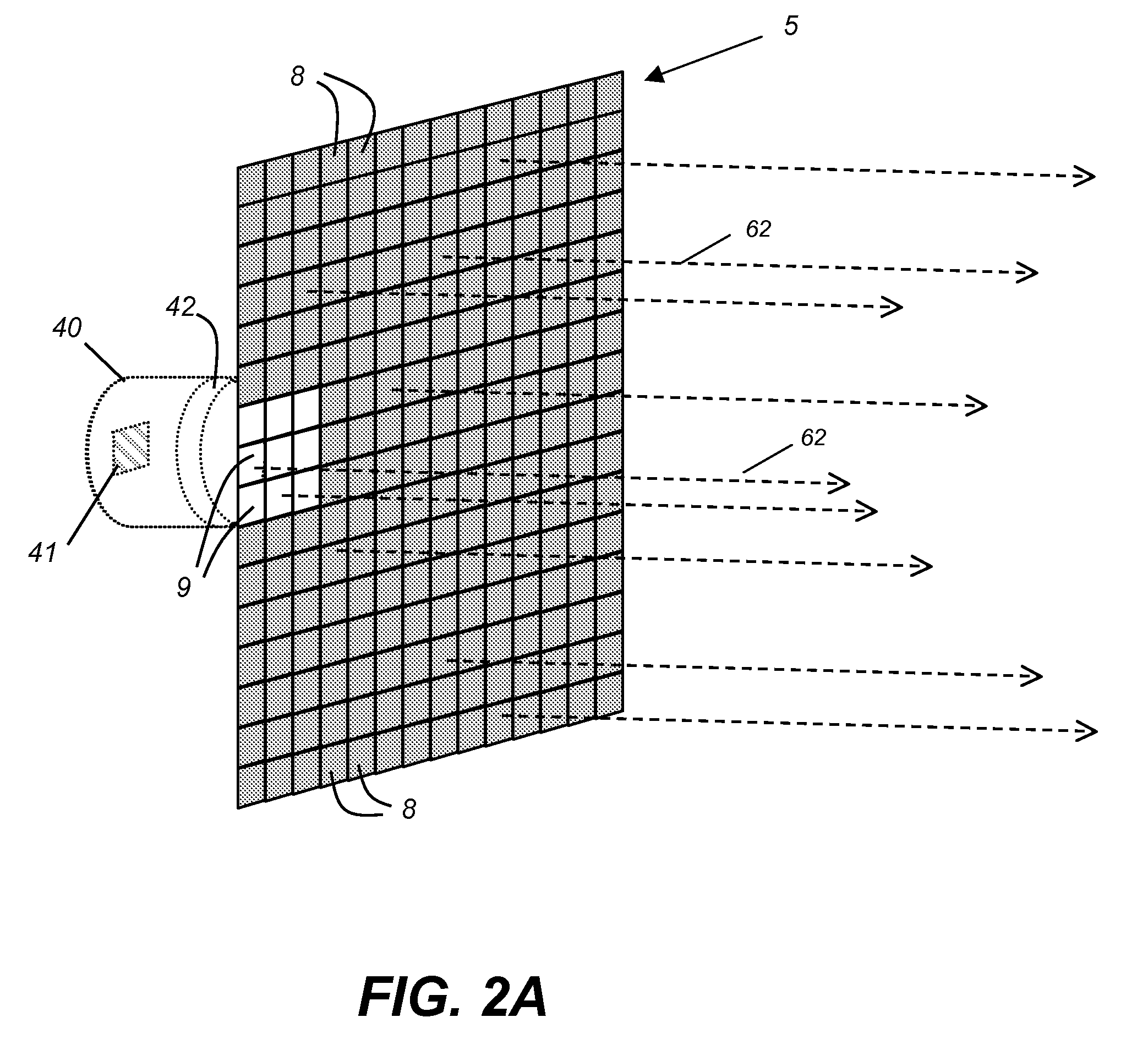Image capture and integrated display apparatus
a display apparatus and image technology, applied in the field of image capture and integrated display apparatus, can solve the problems of limited effectiveness and widespread acceptance, reduced display brightness, and averted eyes of observed participants
- Summary
- Abstract
- Description
- Claims
- Application Information
AI Technical Summary
Benefits of technology
Problems solved by technology
Method used
Image
Examples
Embodiment Construction
[0043]The apparatus and method of the present invention address the need for an integrated display and image capture device by taking advantage of a combination of factors including the following:
[0044](i) fabrication of an emissive electronic display having an electrode that has a transparent portion and a reflective portion;
[0045](ii) use of light modulation component(s)s that can be emissive or non-emissive;
[0046](iii) timing to synchronize alternating or combining image capture and image display functions for various apparatus component(s)s;
[0047](iv) structural device layout and design to enhance image capture and image display; and
[0048](v) corrective methods to enhance image quality for image capture and image display.
[0049]Significantly, the apparatus and method of the present invention avoids the pitfalls of compound imaging, as was described earlier with reference to the examples of the Tsuboi '8332, Uy '7222, and Zanaty '0973 disclosures by using imaging optics and sensor...
PUM
 Login to View More
Login to View More Abstract
Description
Claims
Application Information
 Login to View More
Login to View More - R&D
- Intellectual Property
- Life Sciences
- Materials
- Tech Scout
- Unparalleled Data Quality
- Higher Quality Content
- 60% Fewer Hallucinations
Browse by: Latest US Patents, China's latest patents, Technical Efficacy Thesaurus, Application Domain, Technology Topic, Popular Technical Reports.
© 2025 PatSnap. All rights reserved.Legal|Privacy policy|Modern Slavery Act Transparency Statement|Sitemap|About US| Contact US: help@patsnap.com



